Landscape Gardening in Edmonton
Introduction to Landscape Gardening in Edmonton
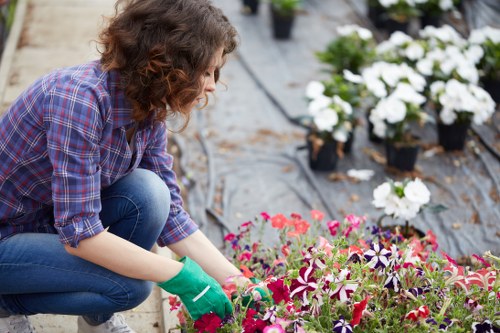
Landscape gardening in Edmonton offers a unique opportunity to transform outdoor spaces into beautiful and functional areas that complement the city's distinctive climate and environment. With its cold winters and mild summers, Edmonton presents both challenges and opportunities for gardeners looking to create stunning landscapes year-round.
Whether you're a seasoned gardener or a novice looking to enhance your home's curb appeal, understanding the fundamentals of landscape gardening in Edmonton is essential. From selecting the right plants to implementing sustainable practices, this comprehensive guide will walk you through everything you need to know to create and maintain a thriving garden.
Edmonton's diverse range of flora and fauna, coupled with its rich soil types and varying sunlight conditions, makes it an ideal location for diverse gardening projects. By leveraging local resources and expert knowledge, homeowners can achieve impressive results that stand the test of time.
Understanding Edmonton's Climate and Soil
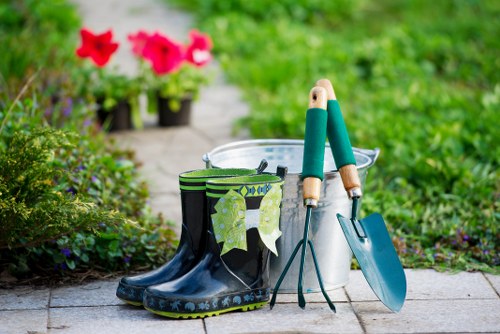
Edmonton experiences a continental climate characterized by long, cold winters and short, warm summers. This climate significantly influences the types of plants that can thrive in the region. Gardeners must select plant species that are resilient to frost, temperature fluctuations, and varying precipitation levels.
The soil composition in Edmonton can vary, but it typically consists of a mix of clay, silt, and sand. Understanding your garden's soil type is crucial for selecting appropriate plants and amending the soil to improve fertility and drainage. Conducting a soil test can provide valuable insights into its pH levels and nutrient content.
Proper soil preparation is the foundation of successful landscape gardening. Incorporating organic matter such as compost or well-rotted manure can enhance soil structure, promote healthy root growth, and increase water retention capabilities. Additionally, implementing proper drainage solutions can prevent waterlogging and root rot, ensuring that plants remain healthy throughout the growing season.
Designing Your Edmonton Garden
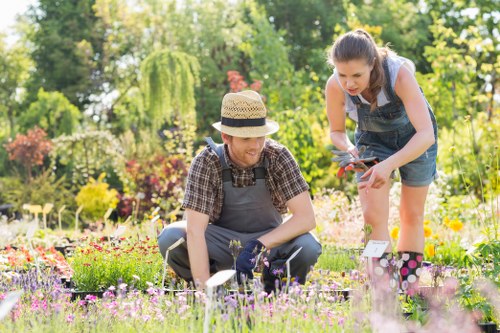
Designing a garden that complements Edmonton's natural surroundings involves careful planning and consideration of various factors. Start by assessing the available space, sunlight exposure, and existing landscape features. Creating a detailed layout can help visualize the placement of plants, pathways, and other garden elements.
Incorporate a mix of evergreen and deciduous plants to provide year-round interest. Evergreen shrubs and trees offer structure during the winter months, while deciduous plants add color and texture during the spring and summer. Additionally, integrating focal points such as ponds, stone sculptures, or seating areas can enhance the garden's aesthetic appeal.
Consider the use of native plants, which are well-adapted to Edmonton's climate and require less maintenance compared to non-native species. Native plants also support local wildlife, including pollinators like bees and butterflies, contributing to a healthy ecosystem.
Choosing the Right Plants for Edmonton
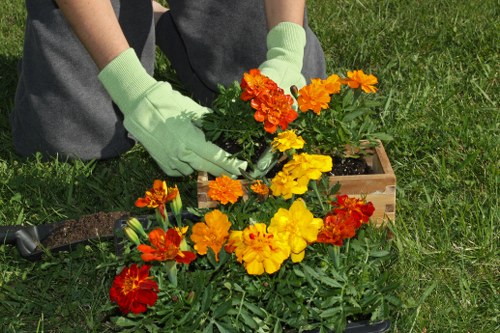
Selecting the appropriate plants is pivotal to the success of landscape gardening in Edmonton. Opt for hardy perennials, shrubs, and trees that can withstand the region's cold temperatures and fluctuating weather conditions.
Popular choices include:
- Rhododendrons: Known for their vibrant blooms, they thrive in acidic soils and partial shade.
- Hostas: Ideal for shaded areas, they offer lush foliage and diverse color options.
- Conifers: Evergreen conifers provide year-round greenery and structural contrast.
- Perennials: Plants like daylilies and peonies bring seasonal color and require minimal upkeep.
Incorporating a variety of plant types ensures a dynamic and resilient garden. Additionally, layering plants of different heights and textures can create depth and visual interest, making the landscape more engaging and appealing.
Sustainable Landscaping Practices
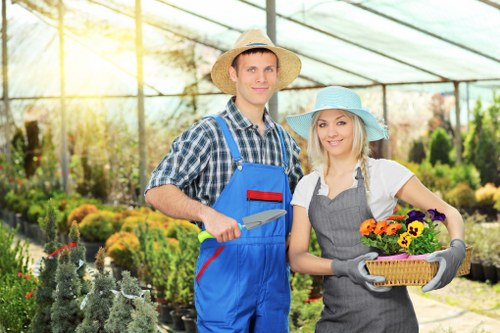
Embracing sustainable landscaping practices not only benefits the environment but also enhances the longevity and health of your garden. Key practices include:
- Water Conservation: Implementing drip irrigation systems and rainwater harvesting can significantly reduce water usage.
- Soil Health: Regularly adding organic matter and avoiding chemical fertilizers promotes robust plant growth and soil biodiversity.
- Native Planting: Choosing native species reduces the need for excessive watering and pest control, as these plants are naturally adapted to the local environment.
- Waste Reduction: Composting garden waste recycles nutrients back into the soil, minimizing landfill contributions.
Additionally, minimizing the use of pesticides and herbicides helps protect beneficial insects and wildlife, fostering a balanced and thriving ecosystem within your garden.
Seasonal Maintenance Tips

Maintaining a landscape garden in Edmonton requires attention to seasonal changes. Each season presents unique challenges and opportunities for garden care.
Spring Maintenance
As temperatures rise, it's essential to prepare your garden for the growing season. Begin by clearing away debris and dead plants from the winter months. Pruning shrubs and trees promotes healthy growth and removes any damaged branches.
Applying a fresh layer of mulch can help retain soil moisture and suppress weed growth. Additionally, fertilizing plants ensures they receive the necessary nutrients to thrive during the active growing months.
Summer Care
Regular watering is crucial during the hot summer months. Early morning irrigation minimizes evaporation and reduces the risk of fungal diseases. Monitoring soil moisture levels helps ensure plants receive adequate hydration without becoming waterlogged.
Continued weeding and pest management maintain the garden's health and aesthetics. Mulching remains important for temperature regulation and moisture retention.
Autumn Preparation
As the growing season winds down, focus on preparing your garden for the winter. Raking fallen leaves and clearing garden beds prevents the accumulation of pests and diseases. Planting spring-blooming bulbs adds anticipation for the upcoming year.
Winterizing irrigation systems and protecting vulnerable plants with mulch or frost covers safeguards them from freezing temperatures and harsh weather conditions.
Winter Care
During the coldest months, minimal maintenance is required, but protective measures are still important. Maintaining pathways and removing snow and ice around plants prevents damage and ensures accessibility for maintenance tasks.
Planning for the next gardening season by researching plant varieties and design ideas can set the stage for a successful and vibrant landscape garden.
Hiring Professional Landscape Gardeners in Edmonton
While DIY gardening can be rewarding, hiring professional landscape gardeners in Edmonton offers expertise and efficiency, especially for complex projects. Professionals bring knowledge of local plant species, climate considerations, and design principles to create tailored garden solutions.
When selecting a landscaping company, consider their portfolio, client reviews, and range of services offered. A reputable landscaper will provide comprehensive services, including design, installation, maintenance, and consultation, ensuring your garden remains healthy and aesthetically pleasing year-round.
Investing in professional landscaping services not only enhances your property's beauty but can also increase its market value. Additionally, professionals can implement sustainable practices, ensuring your garden is both beautiful and environmentally responsible.
DIY Tips for Successful Gardening
For those who prefer a hands-on approach, DIY landscape gardening in Edmonton is both achievable and fulfilling. Here are some essential tips to ensure your gardening efforts yield impressive results:
- Plan Ahead: Sketch out your garden layout, considering sun exposure, soil types, and plant requirements.
- Start Small: Begin with manageable projects and gradually expand as you gain experience and confidence.
- Invest in Quality Tools: Reliable gardening tools make maintenance tasks easier and more efficient.
- Educate Yourself: Stay informed about gardening best practices, seasonal care, and pest management strategies.
- Be Patient: Gardening is a long-term commitment that requires patience and persistence. Allow plants time to establish and grow.
By following these tips, DIY gardeners can create thriving landscapes that reflect their personal style and enhance their living spaces.
Remember, the key to successful gardening is continuous learning and adaptation. Embrace challenges as opportunities to improve your skills and deepen your connection with nature.
Enhancing Curb Appeal with Landscaping
A well-designed landscape garden significantly boosts your property's curb appeal, making it more attractive to visitors and potential buyers. Thoughtful landscaping can create a welcoming entrance, highlight architectural features, and provide a sense of harmony between the built environment and nature.
Consider incorporating elements such as flowering plants, decorative shrubs, and ornamental trees to add color and texture. Pathways made of stone, gravel, or wood can guide visitors through your garden, while lighting fixtures enhance visibility and ambiance during the evening hours.
Adding functional features like seating areas, pergolas, or herb gardens can transform your landscape into a versatile and enjoyable outdoor space. These additions not only enhance the visual appeal but also provide practical benefits for relaxation and entertainment.
Conclusion and Call to Action
Landscape gardening in Edmonton is a rewarding endeavor that combines creativity, sustainability, and a deep appreciation for the natural environment. By understanding the local climate, selecting appropriate plants, and implementing thoughtful design principles, you can create a garden that not only beautifies your property but also provides a sanctuary for relaxation and enjoyment.
Whether you choose to embark on a DIY project or enlist the expertise of professional landscape gardeners, the key to success lies in careful planning, continuous maintenance, and a willingness to adapt to changing conditions.
Ready to transform your outdoor space? Contact us today to start building your dream landscape garden in Edmonton. Our team of experts is here to guide you every step of the way, ensuring your garden flourishes and becomes a source of pride and joy for years to come.
Book your service now and take the first step towards a beautiful and sustainable garden that reflects your personal style and enhances your living environment.

